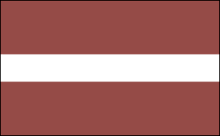NOWE WYDAWNICTWA! TAJEMNICZE MIASTO - TOM 1 ORAZ PRZEWODNIK PORÓWNAWCZY CZ.
2
-
[image:
http://www.cmsklep.eu/michal-szymanski-warszawa-tajemnicze-miasto-stara-warszawa-p-137.html]
[image:
http://www.cmsklep.eu/warszawa-pozostale-d...
niedziela, 25 września 2011
USTRZYKI DOLNE
Wyświetl większą mapę
Jedno z większych miasteczek w Bieszczadach, liczące ok. 9500 mieszkańców. Wieś założona została w 1509 przez Iwonia Unihowskiego, rodu Przestrzał (stąd herb miasta), pod nazwą Ustryk. Ustrzyki znaczyło mniej więcej tyle, co 'ujście rzek'. W 1627 Ustrzyki zostały spalone podczas najazdu Tatarów. W 1723 wieś otrzymała prawa miejskie. Mieszkańcy uczestniczyli w Powstaniu Krakowskim w 1846, a w 1872 puszczono tędy linie kolejową, co przyspieszyło rozwój miasta, wraz z zapoczątkowaniem tutaj przemysłu naftowego. I Wojna światowa przyniosła miastu zupełne zniszczenie, ponieważ przechodził tędy kilka razy front. Na początku II wojny światowej miasto zajęła Armia Czerwona, włączając je do Ukrainy. Okupacja ZSRR i wywózki na Syberię trwały do 1941, kiedy okolice zajęła armia słowacka, która wraz z hitlerowcami terroryzowała mieszkańców, szczególnie Żydów i Romów. Po walkach w 1944 miasto zajęła armia sowiecka i do 1951 teren należał do ZSRR. W 1981 zaczął się tutaj 50-ciodniowy strajk rolników. Dziś jest to turystyczne centrum regionu.
One of the larger towns in the Bieszczady Mountains, with a population of about 9500 inhabitants. The village was founded in 1509 by Iwon Unihowski, of PRZESTRZAL family (hence the emblem of the city - przestrzał means 'shot through'), under the name of Ustryk. Ustrzyki meant more or less the same as a 'river mouth'. In 1627 Ustrzyki were burned during the Tatar invasion. In 1723 the village received city rights. The town residents participated in the Krakow Uprising in 1846, and in 1872 they built the railway line, which accelerated the development of the town, along with the inauguration of the oil industry here. World War I brought the complete destruction of the city because the war front passed through here a few times. At the beginning of World War II Red Army occupied the city, including it into the Ukraine borders. Soviet occupation and deportations to Siberia lasted until 1941, when the Slovak army came around, which, together with the Nazis, terrorized the residents, especially Jews and Roms. After fights in 1944, the Soviet army occupied the city and until 1951 the area belonged to the USSR. In 198 a 50-day farmers strike began here. Today it is the tourist center of the region.
Rynek
A main square
Pomnik ku czci osób zamordowanych w czasie II WŚ
A monument for the people that were killed during the II WW
Główna ulica miasta
The main street of the town
Jedna z rzek miejskich
One of the town's rivers
Pomnik poświęcony ludziom zamordowanym przez ukraińskie oddziały UPA w 1920
A monument dedicated to the people murdered by Ukrainian forces UPA in 1920
Kapliczka ludowa
Regional chapel
Kościół Wniebowzięcia NMP - sanktuarium MB Bieszczadzkiej z 1743
The church of St. Mary Assumption - a sanctuary of St. Mary of Bieszczady Mountains, from 1743
Stacja kolejowa
Railway station
Dom kolejarski
Railway workers house
Budynek dawnego kina
Old cinema building
Centrum
Town centre
Subskrybuj:
Komentarze do posta (Atom)










































Brak komentarzy:
Prześlij komentarz